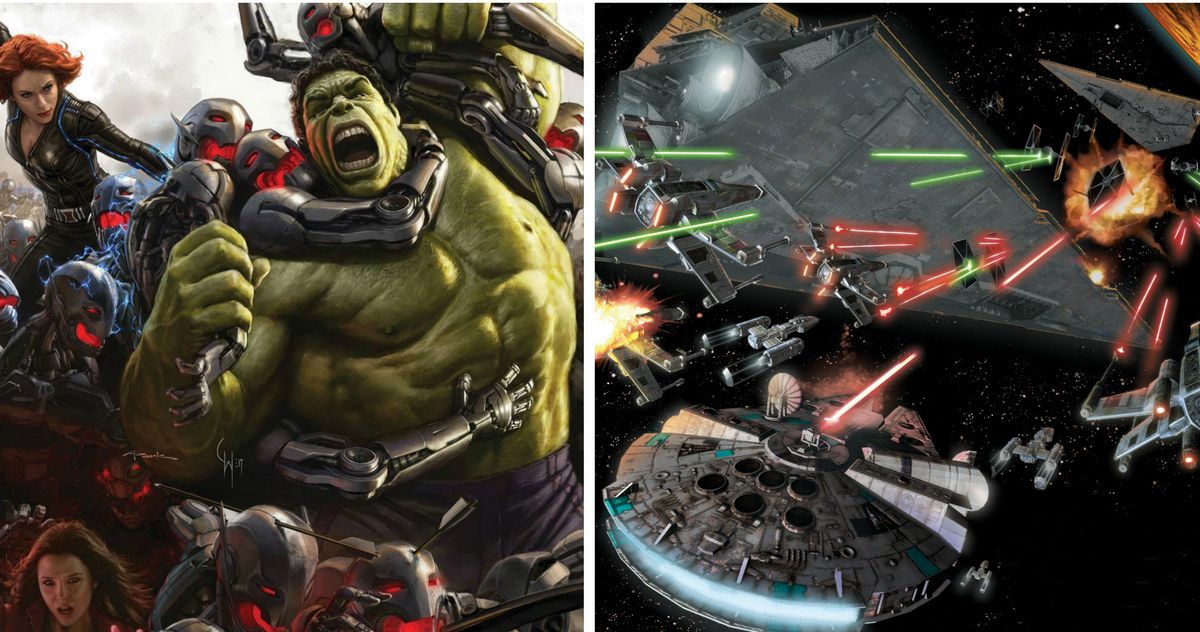Industrial Light & Magic, the in-house effects company established by George Lucas in 1975, is still one of the leading forces in the industry and is responsible for working on some of the biggest movies over the past five decades. They are currently working on director Joss Whedon's superhero sequel Avengers: Age of Ultron and will begin working on Star Wars: Episode VII in just a few short weeks as principal photography wraps on J.J. Abrams sci-fi epic. Both movies are expected to push boundaries and break new ground at ILM.
Disney's acquisition of Lucasfilm means ILM will be working on more Disney movies, including all of those Marvel sequels and spin-offs that are planned throughout the rest of this decade. To celebrate, and for work purposes, the company has launched a new studio in London, and held a grand opening this past week. President Lynwen Brennan was there to speak with IGN, and was able to give an update on the VFX and SFX that are being utilized in both Avengers: Age of Ultron and Star Wars: Episode VII.
It seems one of the biggest challenges facing the company is the return of the Hulk, who needs to be bigger and better than we last saw him in 2012's Marvel's The Avengers.
"As usual ILM does some of the harder work that isn't out there in the trailers, so I can't talk about much. But obviously the Hulk is in there, and he's a really big creative challenge for us. Getting that personality is very important to Joss [Whedon], and it's very important that it's driven by Mark [Ruffalo]'s performance. We've developed a new capture system, which we call Muse, which really captures the actor's performance - it allows us to combine different takes as well."
While ILM is doing a lot of heavy lifting in bringing the Hulk to the big screen, its Mark Ruffalo who brings the emotional heart and grounds the character in reality. Andy Serkis, considered the best Motion-Capture artist in Hollywood at this time, is working with both ILM and Mark Ruffalo to perfect the performance, and bring both the technical and human side to this iconic character, a fan favorite that is getting a bigger role this time out.
Lynwen Brennan also talked about the challenges facing Star Wars: Episode VII. As it has been widely reported and seen in some of the select videos sent out from the set, J.J. Abrams is bringing back the aesthetic of the original trilogy, and will be utilizing practical effects, especially in bringing some of the legendary spaceships, like the Millennium Falcon and the X-Wing fighters to life.
Lynwen Brennan described how having the practical side of the Star Wars universe actual helps the visual effects side.
"What it does for us in visual effects is it also gives us something to build upon. It gives us something to ground our visual effects with. Not only in the shots that have practical sets that we're expanding on, or putting a creature into, it also gives us a really strong aesthetic that we know to follow in shots that are all-CG.
It's very much JJ [Abrams]'s style, we've worked with JJ quite a few times now. One of the things that makes his films have so much heart is they are grounded in reality. There's something the actors can touch and feel. He's so passionate about that, and it comes through in his films.
Some of this movie takes place in space, that won't be a shock to anybody, I don't think I'm giving anything away there (laughs) and that's hard to shoot without it being CG. But [the practical effects] gives us that sense of reality that we aim for."
J.J. Abrams has been working to get as much in-camera effects work done as he can, but we will still be seeing a lot of CGI when the movie hits screens in time for Christmas next year.

